How Do You Know if Mold Is Making You Sick?
July 26, 2021
Mold not only looks terrible on your walls and tiles, but it can also affect your health. Mold allergies can cause the same signs and symptoms as other types of common upper respiratory allergens such as pollen, dust, animal dander, etc.
This means that if you've got your known allergens under control but can't pinpoint what's causing these other unknown allergy-like symptoms,
mold might be the culprit.
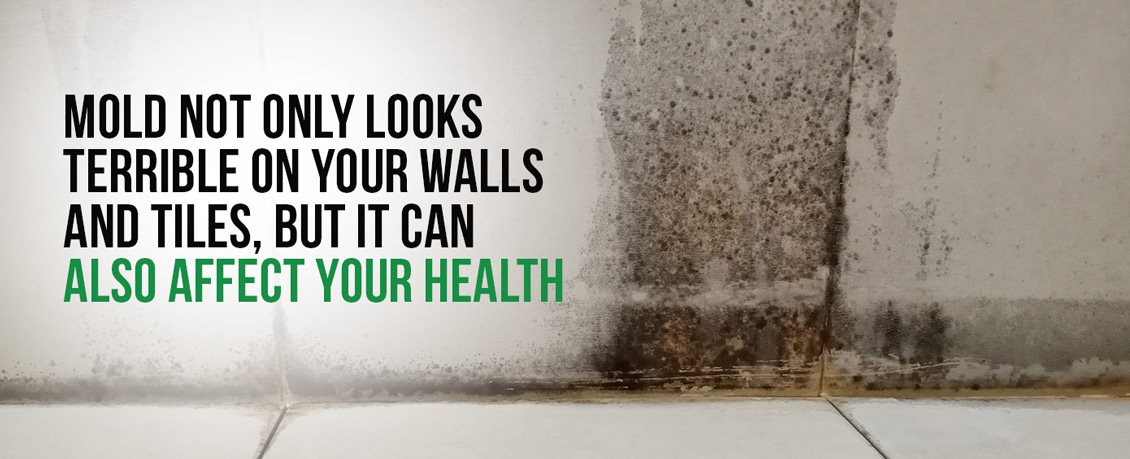
So, if you suspect mold is making you sick, you first need to understand what mold is and what health effects are associated with mold exposure. Then, you need to know which places to look for when identifying mold growth. If you find mold in your home or business, you need to learn how to remove it and then try to keep it that way for good.
Let's start from the top and dive into the world of mold.
What Is Mold?
A consumer-focused mold fact sheet by the American Industrial Hygiene Association (AIHA) defines mold as "fungi that are commonly found on food or wet materials." This definition includes a wide variety of fungi. Still, we will focus on the common types of molds listed by the
CDC's Basic Facts About Mold and Dampness guide that can be found indoors and the species that most people will typically refer to as mold:
- Cladosporium: This common type of mold in homes is black or dark green, and you can probably find it growing on the backside of toilets, painted walls and surfaces, tiles, wood, carpets, and even inside fiberglass air ducts and A/C systems.
- Aspergillus: This type of mold likes to grow in air conditioning systems, but you can also find it growing on your food and surfaces. There are 185 species of Aspergillus, according to Doctor Fungus, and they vary so much in color that you could pretty much find every color in the rainbow in one species or another.
- Penicillium: You can also find this type of mold growing in your food once it starts to decay, and you can quickly identify it by its blue hue. Because of its color, Penicillium is usually referred to as "Blue Mold."
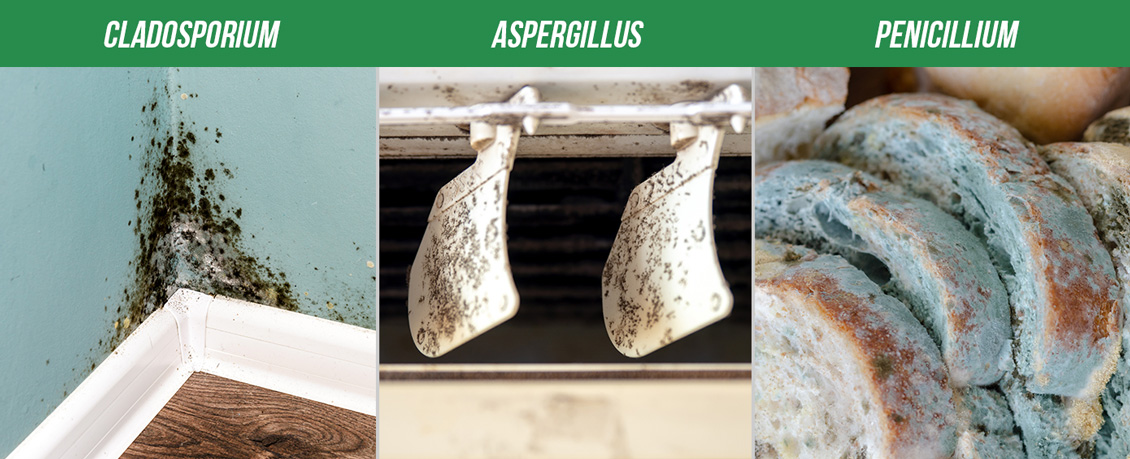
From the blue mold found on your food to any of the other common types of molds found indoors we've listed above, all molds release spores in the air. It's how mold travels and spreads until they land on damp enough areas to begin reproduction.
However, these spores can land on your body, or you can breathe them in. Once that happens, you might experience some of the following health effects or irritations.
Symptoms and Risks Associated With Mold
According to
the World Health Organization (WHO) Guidelines for Indoor Air Quality, some health effects associated with mold are:
- Respiratory symptoms like coughing or wheezing.
- Allergies, with signs of having red, itchy and watery eyes, skin rashes and a sore throat.
- Asthma.
Albeit rare, mold can cause infections of the skin or mucous membranes for relatively healthy individuals. Those with various immune suppression disorders or underlying lung diseases and even people diagnosed with cancer or HIV/AIDs are more susceptible to systemic infections caused by mold.
Suppose you don't have any of the conditions we just mentioned. In that case, your primary worry should be about respiratory symptoms, allergies, and asthma because the WHO, in their indoor air quality guidelines, showed that the relationship between these symptoms and exposure to mold and dampness in homes was proven in a 2007 study.
They proved that exposure to mold and humidity inside homes increased the chances of "a variety of respiratory and asthma-related health outcomes" by 30-50 percent.
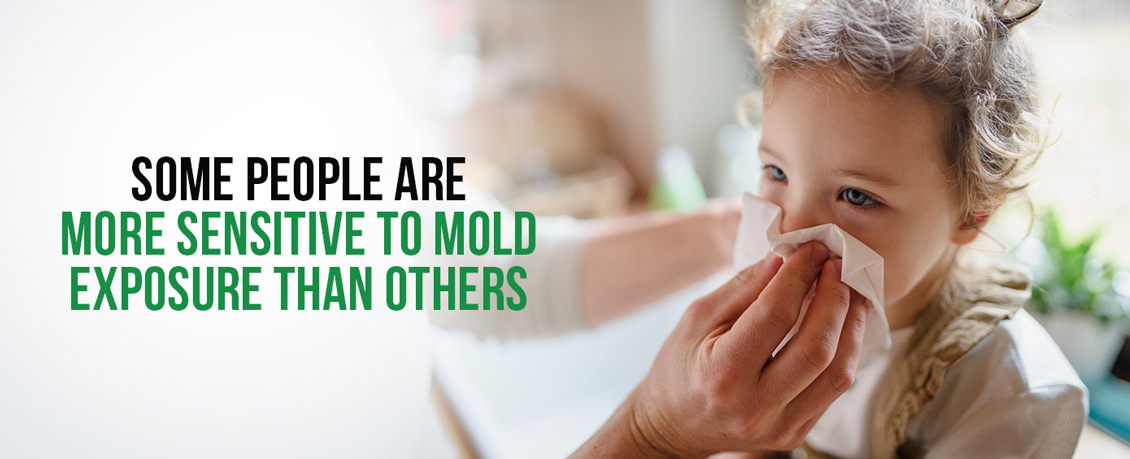
Still, not everyone is the same, and some people might be more sensitive to mold exposure than others. Make sure you address humidity levels and mold problems quickly if you or the people you live with are included in the following groups:
- Children and infants
- Pregnant women
- Elders
- And of course, people with pre-existing respiratory conditions, asthma, or who are sensitive to allergies.
The truth is that even if you are not among these groups, being exposed to
mold and poor indoor air quality may cause you to develop adult on-set asthma or allergies. That's why it is essential to address mold problems in your business or home ASAP. So, how can you tell if you need to take action?
We'll help you out by explaining how you can tell if you have a mold issue, which areas in your home or business are more at risk, and how to remove it.
How Do You Identify Mold in Your Home or Business?
Identifying if you have mold in your home or business is pretty straightforward. Mold can be seen as spots of various colors growing on your walls, tiles, carpets, etc.
Also, mold smells.
If a room smells moldy to you, but you cannot see it anywhere, then it's probably growing inside your walls (because of bad insulation) or even under your wallpaper. When this happens, mold can be a pain to get rid of.
The best way to avoid mold growing in these bothersome places is to keep an eye out for moisture and dampness. Since mold grows on surfaces that have not been adequately dried or aired out within 24 to 48 hours, you could say
the key to preventing mold growth is moisture control.
Environmental health experts provide guidance to prevention against mold for people who live in "areas susceptible to flooding, tornadoes, wildfires, and hurricanes." Homes or businesses in these areas are more susceptible to mold growth and damage because they most likely have high moisture and humidity levels indoors and out. So, if the area you work or live in mirrors these conditions, make sure you keep your eyes open and your nose sharp for mold.
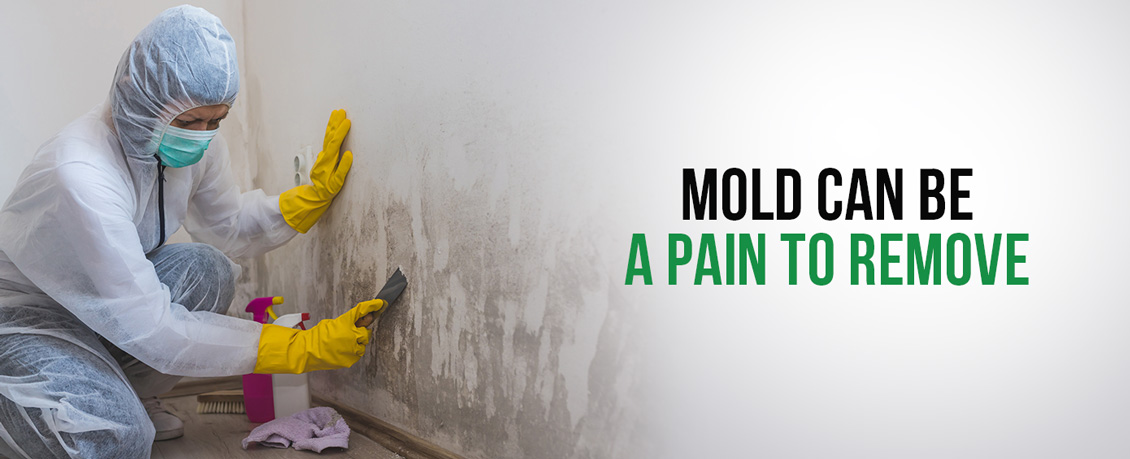
Suppose you take our advice to heart and find mold in your home or business; how do you get rid of it? Moreover, how can you prevent it from growing back?
Tips on How To Get Rid of Mold for Good
Sadly, completely removing mold spores is impossible because they drift in the air both outdoors and indoors.
However, you can reduce the number of spores by removing mold when you see it on your surfaces. Then, you will need to avoid moisture and control humidity levels to avoid spores from taking root and growing back. Here are a few tips for you to accomplish these goals:
- Remove mold from surfaces using cleaning products that do not produce toxic fumes. After all, you want to improve your indoor air quality, not make it worse. This is especially important if you are experiencing some of the respiratory symptoms mentioned above or if you suffer from asthma or allergies already.
It's important to note that you should physically and visibly remove mold from surfaces. Only applying a cleaning product without scrubbing it off will not be enough since even dead mold spores can produce allergies.
- Ensure you dry water-damaged items and areas of your home or business within 24-48 hours to prevent the growth of mold.
- We have said before that moisture control is key. Well, the EPA recommends using dehumidifiers and keeping relative humidity levels "between 30 and 50 percent."
- Take care of any and every possible source of dampness in buildings and moisture like water leakage, badly insulated pipes, old and clogged air conditioning filters, among others.
- Ensure you provide sufficient ventilation in areas that tend to be constantly damp, like bathrooms and laundry rooms. Opening windows and using vents in these areas is usually enough to keep humidity levels under control.
- Paint on moldy walls tends to peel off and that's a red flag indicating that something is growing! Never paint moldy walls until you remove the mold first and then you can paint it.
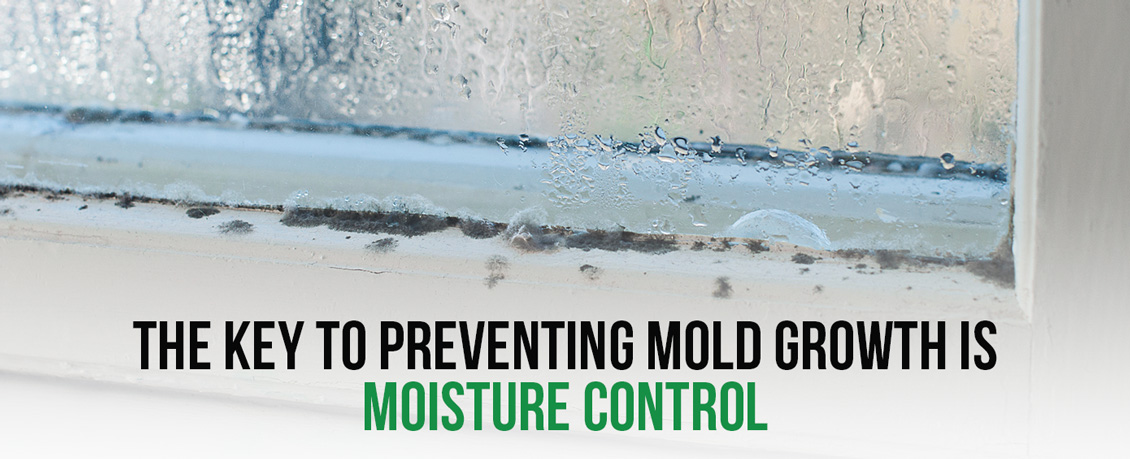
Make sure you apply all of the above, and you might have mold under control in your home or business, even if you live in areas susceptible to flooding. However, if you want to make absolutely sure mold never takes a step inside your home or business again, you need the ultimate weapon.
Germinator's Shield: The Ultimate Weapon Against Mold Growth
Germinator's Shield and hypochlorous acid (HOCl) disinfecting solutions are part of our patent-pending process to ensure the most advanced antimicrobial protection for your
surface sanitizing and disinfecting needs.
The Shield is a water-based quaternary ammonium compound that imparts a durable bacteriostatic finish to a wide range of non-food contact surfaces. It is EPA-registered as effective against the growth of mold, mildew, algae, and odor-causing bacteria. This application creates an invisible barrier that combats deterioration and discoloration and promotes freshness for up to three months.
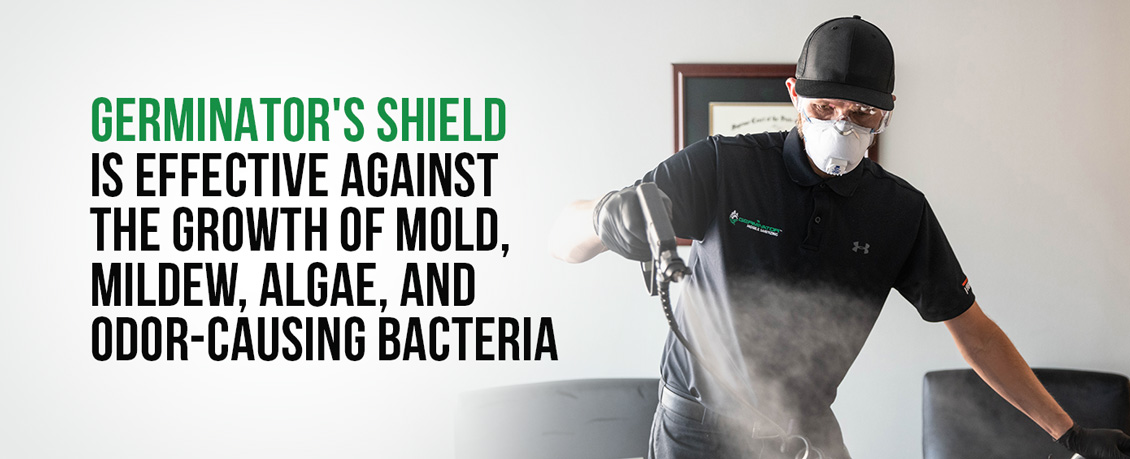
We apply both our HOCl and Shield solution using electrostatic sprayers to ensure optimal surface coverage.
Our patent-pending process will provide your home or business with the ultimate weapon to help get rid of mold!
Yet if you want the full power of our Germinator Zone that provides 360 degrees of protection to give you peace of mind and help you reclaim the spaces and places where you work, live, and play, then make sure you also check out our
air and
body solutions. Call us at
855-NO-GERMZ (664-3769). We will be happy to answer any questions you may have to help you create a livable, touchable Germinator Zone for your home or business.





